#native american weaving
Photo

Mudroom - Southwestern Entry
Inspiration for a mid-sized southwestern ceramic tile entryway remodel with yellow walls and a dark wood front door
#native american bedding#table runners#american indian art#navajo rugs#floor rugs#native american weaving
5 notes
·
View notes
Text
Mudroom - Southwestern Entry
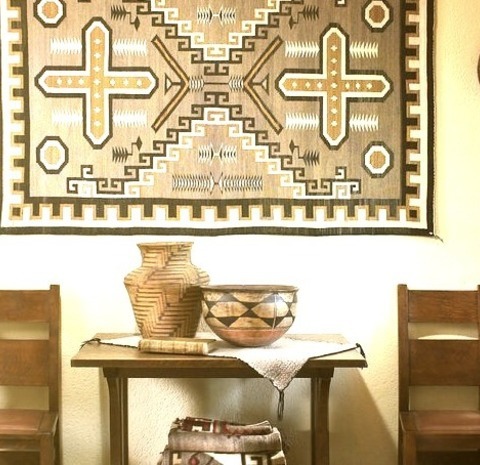
Inspiration for a mid-sized southwestern ceramic tile entryway remodel with yellow walls and a dark wood front door
#native american bedding#table runners#american indian art#navajo rugs#floor rugs#native american weaving
0 notes
Text




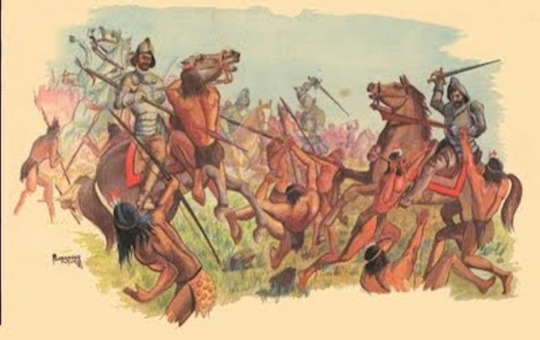







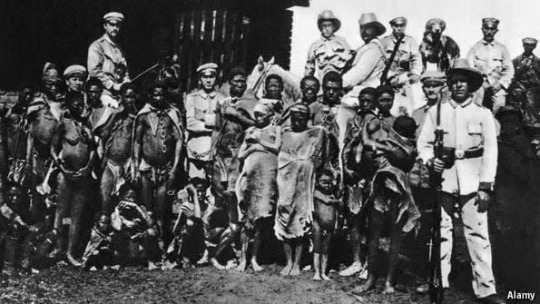


Palestine will be free.
Who Remembers the Armenians?, Najwan Darwish / Myth of the Vanishing Indian, Rena Priest / Shadow Procession, William Kentridge / The Wretched of the Earth, Frantz Fanon / Darfur (Jesus Wept), William F. DeVault / Srebrenica, Safet Zec
#web weave#web weaving#webweaving#palestine#israel#israel palestine conflict#palestinians#gaza#middle east#crusades#armenia#armenian genocide#bosnian genocide#native american#native genocide#the black war#black war#massacre of salsipuedes#moriori genocide#herero and namaqua genocide#herero#namaqua#poetry#poems#colonialism#colonization
301 notes
·
View notes
Text
Woven artifacts far older than previous examples show just how old the rich weaving traditions of the Alutiiq culture of Alaska are.
40 notes
·
View notes
Photo

Hopi weaver, New Mexico
Date: 1901
Negative Number: 037527
549 notes
·
View notes
Text
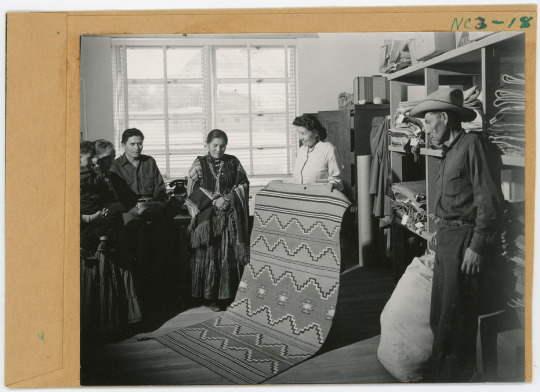
The Navajo Arts and Crafts Guild buying rugs in Window Rock, Arizona, on March 27, 1943.
John and Agnez Anderson selling; Marie Martin buying.
Record Group 75: Records of the Bureau of Indian Affairs
Series: Photographs of Navajo Life in the Southwestern Region of the United States
File Unit: Arts and Crafts
Image description: Six people in a room with large shelves along one side. One woman is holding one end of an unfurled woven rug, which has straight horizontal stripes and stepped diagonal stripes in several different colors (well, different shades of gray in this black and white photo). A man in a cowboy hat stands to the side near the shelves, which hold folded rugs. Three adults stand on the other side of the room, looking at the rug; one woman is holding a small child.
#archivesgov#March 27#1943#1940s#Native American history#American Indian history#Indigenous American history#Navajo#Diné#art#craft#rug#weaving
94 notes
·
View notes
Text
Hi there! New blog, for different content. I was posting my weaving stuff on my art page, but thought that I do enough weaving to warrant a dedicated blog.
I’ll be posting in-progress pieces along with a smattering of completed ones that have just kinda been sitting around for a while.
So, uh, yeah. . . First post is of the biggest project I have ever done. A dance set that I was commissioned for between 2019-2020.

#fingerweaving#handmade#historical art#indiginous#indiginous art#Native American#Indian braiding#weaving#hand weaving#there is no loom that can do this#i went absolutely insane making this but look how pretty it is!
16 notes
·
View notes
Text
Getting back into weaving again, finally. This is a commission I'm working on.

4 notes
·
View notes
Photo
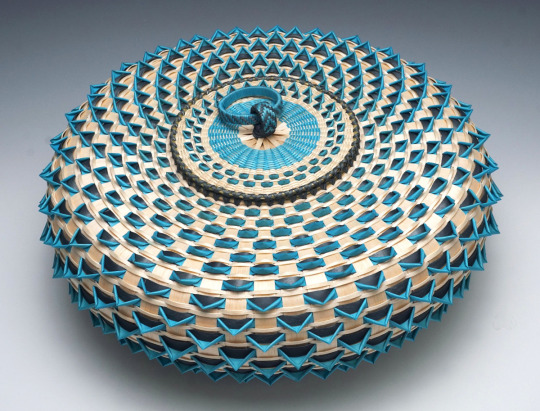
“Large Turquoise Urchin Basket” by Jeremy Frey (Passamaquoddy, b 1978, Indian Township, Maine), 2019, brown ash and sweetgrass, overall: 5¼ by 11½ inches diameter. Museum purchase through the Kenneth R. Trapp Acquisition Fund.
52 notes
·
View notes
Text

Navajo chief’s blanket, c. 1880-90.
Region: South-West America.
Amongst the Navajo, weaving has traditionally been done by women. It regarded as a sacred art; the universe was created by a mythical ancestress known as Spider Woman, who wove the universe on a great loom. However, the woven textiles and designs of the Navajo tribe have no sacred significance. Early blankets were made using cotton and the wool of the Chinna sheep, using traditional upright looms. A Navajo would carryout all the processes of producing blankets, from shearing the sheep and spinning the wool, to dying and weaving. Many women kept large flocks of sheep. As with many traditional crafters, the Navajo weavers were quick to use the innovations introduced by European settlers, specially the ‘Germantown’ commercially produced yarns. These yarns, named after the town where they were produced were extremely fine and superior to the native yarns. The chemically produced dyes prompted a great change in the colours and patterns of the Navajo; the early, simply striped blankets of the first phase were superseded by exciting new designs in brilliant colours, known as ‘Eye Dazzlers’.
Source: ‘Folk Art’, Susann Linn-Williams, pp. 214-5.
#Native American#Navajo tribe#traditional crafts#weaving#wool#blanket#chief#Native American women#Spider Woman#Chinna#sheep#Germantown
2 notes
·
View notes
Text
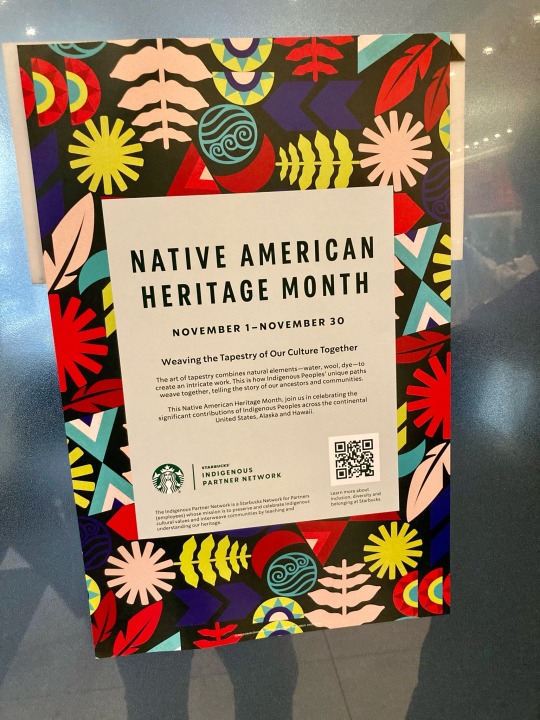
#Starbucks#George Washington University#Native American Heritage Month#November#poster#Weaving the Tapestry of Our Culture Together#Native America#Washington DC
0 notes
Text
so I found this really cool website that sells native seeds- and you might be asking me "snekdood, haven't you posted an entire list of websites that sell native wildflower seeds that you're going to add on to soon?" and yes that's true, but that's not the kind of native seed im talking about rn.
see, on my quest to find websites that sell native wildflowers, I came across this dope ass website that sells seeds that have been farmed and harvested by ntv people traditionally, i'll let the website do the talking:




so anyways this is the coolest website ever. you can find the wild relatives of chiles on here called chiltepines, you can find different colors of corn and cool squash's, and every seed from whichever farm has it's own lil origin story written about it. you can also find other veggies here that are already commercially available to help fund and support this organization. as well as there being a cool gift shop with a lot of art made by different native folk from all around as well as cookbooks, jewelry, pottery, weavings, and clearly plenty more:

as well as a pantry?? with premade soup mixes??? and i really want to try them now??????
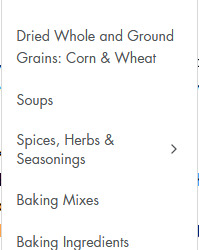
anyways I think its worth snoopin' around bc I'm almost positive you'll see something you think is cool (oh also if you happen to have some seeds passed down from ur family too and ur also native they seem like they would gladly help produce more)
#heirloom seeds#native plants#native wildflowers#native seeds#native seeds search#gardening#farming#seed conservation#heirloom vegetables#vegetables#crops#food#native american#native american traditions#native american heirloom seeds#support indigenous people#indigenous art
2K notes
·
View notes
Text
Adding To or Starting a Garden
AKA, the beginning of the Plants-Related section of this series.
This is my third post in a series I’ll be making on how to increase biodiversity on a budget! I’m not an expert--just an enthusiast--but I hope something you find here helps!
Got an area of lawn you’d like to convert to a wildlife haven? An area you can stick some hanging baskets in? Want to know how your garden of tomatoes and zucchinis is already putting in a lot of work? This is the section for you!
It would be dumb of me to not acknowledge that the act of gardening can come with a lot of costs. Buying seeds, buying plants, buying soil, raised bed materials, mulch, etc. … it can all get a bit daunting, let’s be honest! But there’s quite a few ways to get seeds and plants for free or extremely cheap, which I’ll be addressing in this section! The next section will be all about addressing the other Costs in gardening and how to mitigate or eliminate them entirely.
Also, do keep in mind; there’s no need to try and convert a whole area from lawn to garden or unused to garden at once. In fact, it could actually be extremely beneficial to do it a little at a time--maybe four or five square feet to start out.
Front Lawn (or Managing Principles)
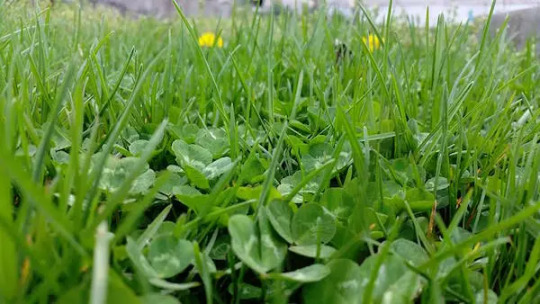
If you live in a place where you’re required to have a grass turf lawn (HOA’s come to mind…), try replacing it with native grasses instead! You could even possibly use a low-growing ground cover plant like clover to a similar effect! Reseeding/replacing an entire lawn can be a big upfront cost, but even just letting the lawn be a little messy and tall helps. If the lawn gets patchy, leave the bare spots for a little while and something different will likely pop up! Pioneer species will fill the gaps and provide benefits to other plants around them, support animals, and more! If you want to take the guesswork out of it, you could always research what the pioneer species are in your area and plant the ones you like most.
Obtaining Seeds for Cheap or Free
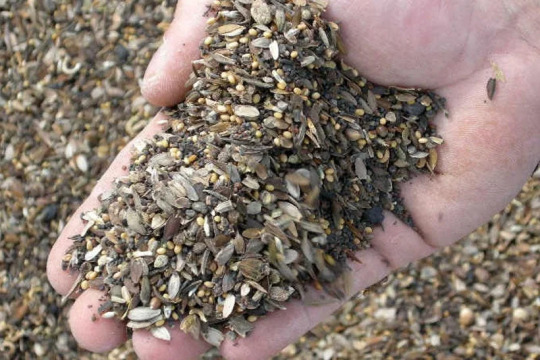
The cheapest way to start a garden is by far via seeds. However, seeds can be a bit complicated to grow, and some sources make them… way overpriced. Fortunately there are ways to get seeds for little to no cost!
Some places sell seeds for as low as a dollar, 50 cents, or 25 cents! The packets may not have a lot of seeds, but it’s definitely a good start for a low budget! I’ve personally bought cheap seed packets at Walmart--the Ferry-Morse and Burpee brands are not what we’re looking for here. Typically the cheaper ones I’ve found are American Seed (which is owned by Green Garden Products, which also owns Ferry-Morse, Livingston Seed, McKenzie Seed, and Seeds of Change. Do with that information what you will), but they’re rarely stocked near the Ferry-Morse ones in the Formal Gardening Section. I’ve most often found them on end caps near the gardening section, so you may have to weave through a few aisles to find them, but once you do there’s an array of flower and vegetable seeds to select from! Alternatively, I’ve found seeds at Dollar Tree sold 2 or 4 for a dollar in Spring as part of their seasonal product; however, when they’re out of stock, they’re typically out of stock for the year. Try to check them out early in the year!
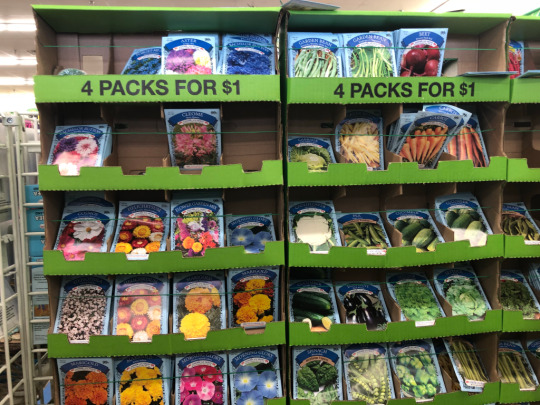
Otherwise, other seed companies like Urban Farmer or Botanical Interests will often have semi-frequent sales in spring and fall, when people are stocking up on seeds--joining their email lists can help you be the first to know when a good sale is going on!
Some foods from grocery stores will provide seeds that you can use in the garden as well. I’ve had the most luck with store-bought bagged beans, peppers, and tomatoes. Some people have had luck with watermelons, apples, citrus, squash, and more. Do keep in mind that you likely won’t get the same variety of fruit/vegetable as the one you bought--the resulting plant may look different and taste different.
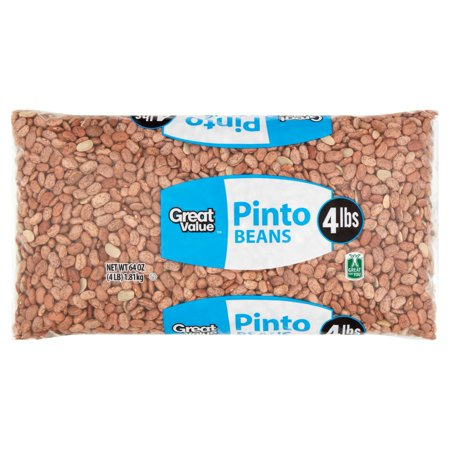
Give it a shot! Pick some beans you like--if they don't grow well, at least you can eat the rest!
If you live in the US, food-producing live plants, bare roots, and seeds can often be purchased with SNAP benefits. But what does growing fruits, veggies, and herbs have to do with boosting biodiversity? While food crops aren’t typically native, they still provide valuable shelter for native insects. Some plants even have intricate relationships with native fauna--like the squash bee, a solitary bee which exclusively pollinates cucurbits like pumpkins, squash, and zucchini. And we get to benefit more directly as well! If you’re planting a diverse range of foods in your garden (as opposed to the swaths of single-plant farms that typically produce what’s sent to grocery stores), you’re supporting high levels of biodiversity by providing a variety of plants for creatures to live and hunt around.
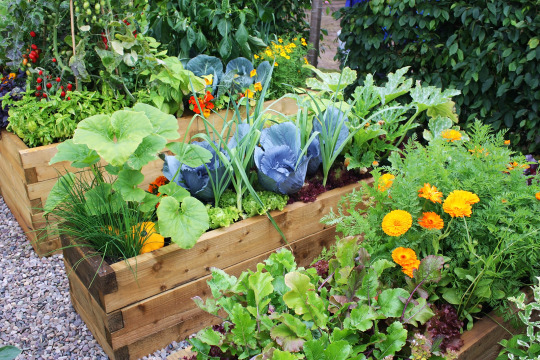
Most of the time, when we think of boosting biodiversity with a garden, we think of a colorful flower garden teeming with pollinator species. However, if we’re striving to use native species, it can be a bit difficult to find some species in stores. I can say from experience that trying to find any wildflower seeds other than butterfly weed, purple coneflowers, and black-eyed-susans is… challenging, if you limit yourself to stores like Walmart, Home Depot, and Lowe’s. You might occasionally get lucky with an ACE Hardware or a local nursery, but even then sometimes it can be hard to track down who in your area is selling what--let alone if you live in an area where no one really is selling native plants or their seeds. Not to mention, even once you find a local or online store selling the seeds you want, they can sometimes cost a pretty penny. So what do you do?
If you have the option to, consider gathering native seeds yourself! Get good at identifying the native flora and fauna--or at least, a few target plants and their lookalikes--and get ready to go! Learn where they tend to grow, when they’ll be seeding, etc. Try to identify the plant before it goes to seed (for most plants, it's easiest to identify when flowering), then check back regularly to gather seeds. Typically, if I want to learn how to collect seed from a specific plant, I just search it on Google or YouTube--oftentimes, I'm lead to the GrowItBuildIt Youtube page, so it may be a helpful resource for you as well! Of course, make sure to leave plenty of seed behind so the wild population can repopulate, and seed can feed other creatures in the area. A good rule of thumb is to take no more than 1/3rd of what's available.

Buying seed in bulk is an option if you can afford the upfront cost. Try teaming up with a few friends to buy some bulk seeds and split them amongst yourselves--you’ll get tons of seed! Prairie Moon is a popular site that'll sell seeds by the pound if you can afford the price--though they're in the US, and I believe they focus on Midwest and East Coast natives.
If you want to cheat the system, don’t buy bulk sunflower seeds--buy bags of sunflower seeds being sold as birdseed. They’re typically all black oil sunflower seeds, but they’ll sprout, and they’re fairly cheap for the amount you get!
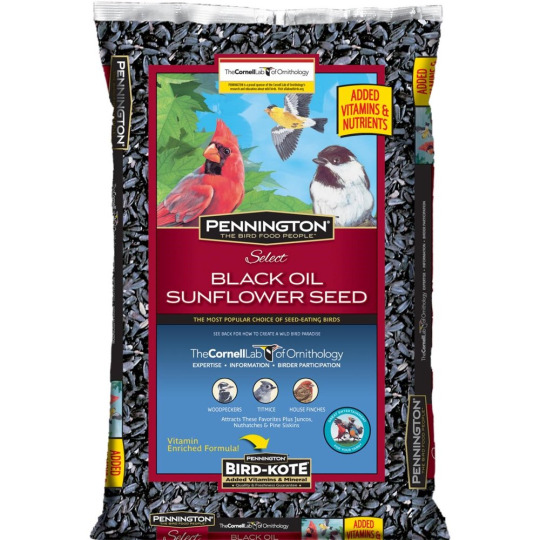
However, beware generic wildflower seed mixes! Many brands like to sell wildflower seed mixes in big box stores like Home Depot, Target, or even Dollar Tree, but they’ll often include flowers that aren’t native or possibly even invasive in your region! Before you make any purchases, double check to make sure the contained seeds won’t do more harm than good! A quality source of native seeds will provide English and Latin names for all seeds included, and will be native to the region or at least non-invasive.

See this? I don't trust this.
There’s a good handful of programs online that’ll send you free seeds if you’re planning to start a native habitat project! Poke around online and see what you can find; you might get lucky! The best time to start looking for these is fall and winter, I find--by early spring, many of them are either done or beginning to wind down... though some also start up in spring. Ultimately--just check regularly! You never know what you can find!
Other Ways to Get Plants
Don’t want to start from seed? That’s fair! You can try cuttings! Just be sure not to take too much of the plant while you do so. Make sure you’ve gotten a few leaf nodes on your cutting, and cut any flowers you may have gotten. Make sure to leave some blooms and foliage on the original plant for the creatures in the current habitat--you don’t want to destroy one habitat to make another in your garden. There’s tons of methods of rooting cuttings, many of which have different efficacy rates for different plants, but that’s a topic for another post.
If you find seedlings growing in a place where they won’t be able to sustain themselves long-term, or are in danger of being destroyed, consider relocating them! You may be able to gently dig up and transplant the seedling to your garden. Don’t do this if they’re in a place where they can easily survive--ideally, you’ll be taking plants from sidewalk cracks, heavily maintained public gardens, roadsides, etc. Do be careful while doing this--ensure your safety first!

You’re totally allowed to join gardening communities like clubs, facebook groups, and more before you’ve even put a trowel to the dirt. These are great places to learn information and advice! Many gardeners are more than happy to help out a new gardener, and will eagerly provide seeds, cuttings, or even baby plants! Talk to some people about your gardening journey and what you’re hoping to do, and you just might find some kindred spirits--or at least get more people interested in the topic!
Seed and plant giveaways and trades happen all the time in gardening clubs, as well as online! Just poke around and see what you can find! Some are explicitly trades, meaning you’re expected to send something in return, but once you get your feet on the ground with some plant knowledge you’ll be stellar! You may be able to explain you’re just starting out, and someone may send you seeds without expecting a trade, but I’d suggest trying giveaways first.

Poke around online and see if there’s a local chapter of your state’s native plant society. From there, you’ll likely be able to find a calendar of events--many of them will host plant sales in the spring, with a bunch of native plant seedlings ripe for the pickings if you can make it out and have some money to spare! Fair warning, though, you’ll want to get there early if you can. If they say they’re starting at 10, try to get there by 9:45. Year after year, there’s always record turnout, and they sell out of plants faster than ever. Just trust me on this. I’ve been let down; hopefully you won’t have to be.
Some libraries are beginning to host seed libraries! Check around and see if your library has one! Ideally, the system works best if you also have seeds to contribute in return, but if you’re just starting out I’m sure they won’t mind you taking some seeds! Just consider saving some seeds to contribute in the future and pay it forward. If your library doesn’t have a seed library? Consider asking if they’d be willing to start one! Community interest is a great way to get the ball rolling on projects like these, but they’ll only know the community is interested if the community tells them they’re interested!
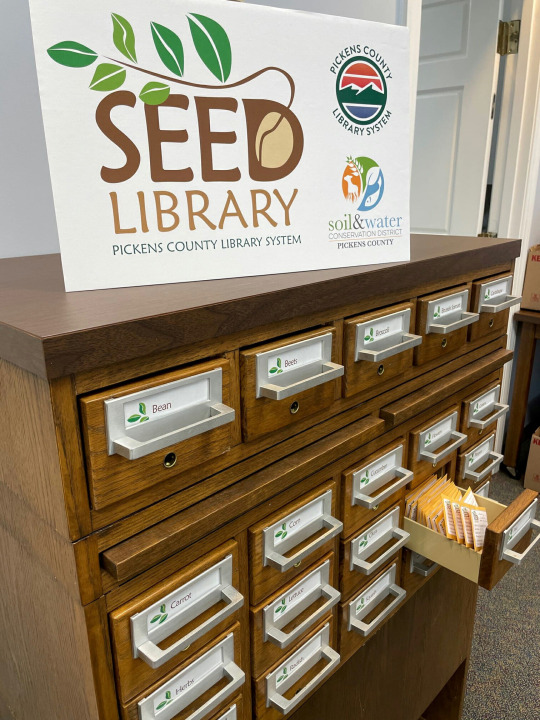
Volunteer to Garden for/with Someone Else
Maybe someone in your area wants to garden, but is struggling to find the time/energy. Many elderly people who used to garden simply can’t anymore but still would like a garden. Other people may love to have a helping hand in their garden. You might even find a few people in your area interested in renting and sharing a community garden plot with others, so they don't have to handle it all on their own! They may be interested in increasing biodiversity right now, or may be willing to if it’s brought up to them. You might be just the kind of person someone needs! Since it won't be your garden, you’ll likely need a bit of permission and collaboration to get anything in particular going, but it’s worth a shot and a way to maybe even make friends!
Again, your mileage may vary with some of these. You may not know where there's a bunch of wildflowers growing in your area, or maybe your local library doesn't have a free seed library. That's okay! Do what you're able to, find what you can find, get what you can get! And there's never any shame with starting small--in fact, starting small can make the project easier to manage and expand when you're able!
That's the end of this post! My next post is gonna be about ways to start growing plants cheaply--low cost seed starting set ups, essentially. There's a lot of good options, many of which I've used myself even! Until then, I hope this advice is helpful! Feel free to reply with any questions, success stories, or anything you think I may have forgotten to add in!
#biodiversity#solarpunk#gardening#outdoor gardening#growing from seed#ani rambles#out of queue#the biodiversity saga#i will be honest I have never flat out approached people to offer to help them garden#HOWEVER. People HAVE approached ME asking ME to help THEM with/plan THEIR garden#granted it was after I'd been gardening for a good few years. and its mostly family or family friends but yknow#people would be like 'oh wanna help me with my veggie garden?' even before I tried growing vegetables#i don't think the library near me has a seed library but you just wait until i. get the courage. to go to the library regularly.#i've seen people also make their own little seed library structures kinda like a little free library but like#i dont think my neighborhood is about that life.#if any of yall have those though it could be a great resource! also send pics because I love seeing them#not to say that this post should become a giant seed trade but if it did become that i would be the opposite of mad#if there's any typos blame my sister shes got the hotel room at like 60-something degrees and I am FREEZING#welp time to shut up now bye
1K notes
·
View notes
Text


Miss Indiana USA 2023 State Costume
l'm proud to be Navajo and Cherokee Native American registered with the Cherokee tribe. This might be one of my greatest honors as a native woman to showcase my culture and a literal piece of my heart on the biggest stage in pageantry. Indiana is the historic homeland of many native groups as citizens from more than 100 different tribes still reside there today. Many natives wear red as a tribute to loved ones who have passed away as my costume's red accents are dedicated to my late momma Susan. The gold base represents the sun and assurance while the feathers stand for courage, honor and hard work. I practice my native culture by studying traditional Cherokee basket weaving I'm learning from native elders. Wado USA, which means thank you!
461 notes
·
View notes
Text
August 2023 witch guide
August 2023 witch guide
Full moon: August 1st in Aquarius
New Moon: August 16th
Blue moon: August 30th Aquarius into Pisces
Sabbats: Lughnasadh August 1st
August Sturgeon Moon
Also known as: Corn moon, harvest moon, ricing moon, barley moon, dog moon, fruit moon, grain moon, herb moon, red moon & wyrt moon
Element: Fire
Zodiac: Leo & Virgo
Animal spirts: Dryads
Deities: Diana, Ganesha, Hathor, Hecate, Mars, Nemesis, Thot & Vulcan
Animals: Dragon, lion, phoenix & sphinx
Birds: Crane, eagle & falcon
Trees: Alder cedar & hazel
Herbs/plants: Basil, bay, chamomile, fennel, orange, rosemary, rue & St. John's wort,
Flowers: Angelica, marigold, sunflower
Scents: Frankincense & heliotrope
Stones: Carnelian, cats/tiger's eye, fire agate, garnet, red jasper & red agate
Colors: Gold, orange, red & yellow
Energy: Authority, appreciation, courage, entertainment, finding your voice, friendship, gathering, harvesting energy, health, love, pleasures, power &vitality
Sturgeon moon gets it's name from the high numbers that are caught at the Great Lakes & Lake Champlain in North America during this time of year. The names come from a number of places including Native Americans, Colonial Americans & European sources.
Lughnasadh
Also known as: Lammas, August eve & Feast of bread
Season: Summer
Symbols: Scythes, corn, grain dollies & shafts of grain
Colors: Gold, green, yellow, red, orange, light brown & purple
Oils/incense: Aloe, apple, corn, eucalyptus, safflower, rose & sandalwood
Animals: Cattle & chickens
Stones: Aventurine, carnelian, citrine, peridot, sardonyx & yellow diamond
Foods: Apples, grains, barley cakes, wild berries, cider, honey, potatoes, rice, sun shaped cookies, blackberry, corn, nuts, breads, blueberry. berry pies & grapes
Herbs/Plants: Alfalfa, aloe, all grains, blackberry, corn, corn stalk, crab apple, fenugreek, frankincense, ginseng, goldenseal, grapes, myrtle, oak leaves, pear, rye, blackthorn &wheat
Flowers: Sunflower, cyclamen, heather, hollyhock & medowsweet
Goddesses: Aine, Alphito, Bracacia, Carmen, Ceres, Damina, Demeter, Freya, Grain goddesses, Ishtar, Kait, Kore, Mother Goddess, Sul, Sun Goddesses, Taillte, Zaramama, Ereshkigal & Ianna
Gods: Athar, Bes, Bran, Dagon, Ebisu, Dumuzi, Ghanan, Grain Gods, Howtu, Liber, Lono, Lugh, Neper, Odin, Sun Gods & Xochipilli
Issues, Intentions & Power: Agriculture, changes, divination, endings, fertility, life, light, manifestation, power, purpose, strength, success & unity
Spellwork: Sun magick, rituals of thanks/offerings, bounty, abundance & fire magick
Activities:
Bake fresh bread
Weave wheat
Take walks along bodies of water
Craft a corn doll
Watch the sunrise
Eat outside with family/friends/coven members
Donate to your local foodbank
Prepare a feast with your garden harvest
Give thanks to the Earth
Decorate your altar with symbols of the season
Clean up a space in nature
Plant saved seeds
This cross-quarter fire festival is celebrated on August 1st or the first full moon of Leo & the seventh sabbat of the year. It represents the first harvest when the Earth's bounty is given for the abundance received.
Some believe this is the time where the God has weakened & is losing his strength as seen in the waning of the day's light. The Goddess is pregnant with the young God who will be born on Yule.
In some traditions, this day honors the Celt god Lugh, the god of craftsmanship; He is skilled in many things including wheel making, blacksmithing & fighting. Though there is some discrepancy as to why Lugh is honored on this day. Some tales say it's because he held a harvest faire in honor of his adoptive mother, Tailtiu.
Sources;
Farmersalmanac .com
Boston Public Library- The Origins & Practices of Lammas/Lughnasadh by Dhruti Bhagat
Llewellyn's Complete Book of Correspondences by Sandra Kines
A Witch's Book of Correspondences by Viktorija Briggs
#witchcraft#wheel of the year#sabbat#lughnasadh#lammas#sturgeon moon#witchblr#wiccablr#paganblr#pagan#wicca#grimoire#book of shadows#witches of tumblr#tumblr witch#moon magic#witch tips#Witch guide#witchy things#traditional witchcraft#witch community#witch society#greenwitchcrafts#spellwork#witches#witch friends#all witches#correspondence
469 notes
·
View notes
Text
Reading list for Afro-Herbalism:
A Healing Grove: African Tree Remedies and Rituals for the Body and Spirit by Stephanie Rose Bird
Affrilachia: Poems by Frank X Walker
African American Medicine in Washington, D.C.: Healing the Capital During the Civil War Era by Heather Butts
African American Midwifery in the South: Dialogues of Birth, Race, and Memory by Gertrude Jacinta Fraser
African American Slave Medicine: Herbal and Non-Herbal Treatments by Herbert Covey
African Ethnobotany in the Americas edited by Robert Voeks and John Rashford
Africanisms in the Gullah Dialect by Lorenzo Dow Turner
Africans and Native Americans: The Language of Race and the Evolution of Red-Black Peoples by Jack Forbes
African Medicine: A Complete Guide to Yoruba Healing Science and African Herbal Remedies by Dr. Tariq M. Sawandi, PhD
Afro-Vegan: Farm-Fresh, African, Caribbean, and Southern Flavors Remixed by Bryant Terry
Barracoon: The Story of the Last “Black Cargo” by Zora Neale Hurston
Big Mama’s Back in the Kitchen by Charlene Johnson
Big Mama’s Old Black Pot by Ethel Dixon
Black Belief: Folk Beliefs of Blacks in America and West Africa by Henry H. Mitchell
Black Diamonds, Vol. 1 No. 1 and Vol. 1 Nos. 2–3 edited by Edward J. Cabbell
Black Faces, White Spaces: Reimagining the Relationship of African Americans to the Great Outdoors by Carolyn Finney
Black Food Geographies: Race, Self-Reliance, and Food Access in Washington, D.C. by Ashanté M. Reese
Black Indian Slave Narratives edited by Patrick Minges
Black Magic: Religion and the African American Conjuring Tradition by Yvonne P. Chireau
Black Nature: Four Centuries of African American Nature Poetry edited by Camille T. Dungy
Blacks in Appalachia edited by William Turner and Edward J. Cabbell
Caribbean Vegan: Meat-Free, Egg-Free, Dairy-Free Authentic Island Cuisine for Every Occasion by Taymer Mason
Dreams of Africa in Alabama: The Slave Ship Clotilda and the Story of the Last Africans Brought to America by Sylviane Diouf
Faith, Health, and Healing in African American Life by Emilie Townes and Stephanie Y. Mitchem
Farming While Black: Soul Fire Farm’s Practical Guide to Liberation on the Land by Leah Penniman
Folk Wisdom and Mother Wit: John Lee – An African American Herbal Healer by John Lee and Arvilla Payne-Jackson
Four Seasons of Mojo: An Herbal Guide to Natural Living by Stephanie Rose Bird
Freedom Farmers: Agricultural Resistance and the Black Freedom Movement by Monica White
Fruits of the Harvest: Recipes to Celebrate Kwanzaa and Other Holidays by Eric Copage
George Washington Carver by Tonya Bolden
George Washington Carver: In His Own Words edited by Gary Kremer
God, Dr. Buzzard, and the Bolito Man: A Saltwater Geechee Talks About Life on Sapelo Island, Georgia by Cornelia Bailey
Gone Home: Race and Roots through Appalachia by Karida Brown
Ethno-Botany of the Black Americans by William Ed Grime
Gullah Cuisine: By Land and by Sea by Charlotte Jenkins and William Baldwin
Gullah Culture in America by Emory Shaw Campbell and Wilbur Cross
Gullah/Geechee: Africa’s Seeds in the Winds of the Diaspora-St. Helena’s Serenity by Queen Quet Marquetta Goodwine
High on the Hog: A Culinary Journey from Africa to America by Jessica Harris and Maya Angelou
Homecoming: The Story of African-American Farmers by Charlene Gilbert
Hoodoo Medicine: Gullah Herbal Remedies by Faith Mitchell
Jambalaya: The Natural Woman’s Book of Personal Charms and Practical Rituals by Luisah Teish
Just Medicine: A Cure for Racial Inequality in American Health Care by Dayna Bowen Matthew
Leaves of Green: A Handbook of Herbal Remedies by Maude E. Scott
Like a Weaving: References and Resources on Black Appalachians by Edward J. Cabbell
Listen to Me Good: The Story of an Alabama Midwife by Margaret Charles Smith and Linda Janet Holmes
Making Gullah: A History of Sapelo Islanders, Race, and the American Imagination by Melissa Cooper
Mandy’s Favorite Louisiana Recipes by Natalie V. Scott
Medical Apartheid: The Dark History of Medical Experimentation on Black Americans from Colonial Times to the Present by Harriet Washington
Mojo Workin’: The Old African American Hoodoo System by Katrina Hazzard-Donald
Motherwit: An Alabama Midwife’s Story by Onnie Lee Logan as told to Katherine Clark
My Bag Was Always Packed: The Life and Times of a Virginia Midwife by Claudine Curry Smith and Mildred Hopkins Baker Roberson
My Face Is Black Is True: Callie House and the Struggle for Ex-Slave Reparations by Mary Frances Berry
My Grandmother's Hands: Racialized Trauma and the Pathway to Mending Our Hearts and Bodies by Resmaa Menakem
On Her Own Ground: The Life and Times of Madam C.J. Walker by A'Lelia Bundles
Papa Jim’s Herbal Magic Workbook by Papa Jim
Places for the Spirit: Traditional African American Gardens by Vaughn Sills (Photographer), Hilton Als (Foreword), Lowry Pei (Introduction)
Post Traumatic Slave Syndrome by Dr. Joy DeGruy
Rooted in the Earth: Reclaiming the African American Environmental Heritage by Diane Glave
Rufus Estes’ Good Things to Eat: The First Cookbook by an African-American Chef by Rufus Estes
Secret Doctors: Ethnomedicine of African Americans by Wonda Fontenot
Sex, Sickness, and Slavery: Illness in the Antebellum South by Marli Weiner with Mayzie Hough
Slavery’s Exiles: The Story of the American Maroons by Sylviane Diouf
Soul Food: The Surprising Story of an American Cuisine, One Plate at a Time by Adrian Miller
Spirituality and the Black Helping Tradition in Social Work by Elmer P. Martin Jr. and Joanne Mitchell Martin
Sticks, Stones, Roots & Bones: Hoodoo, Mojo & Conjuring with Herbs by Stephanie Rose Bird
The African-American Heritage Cookbook: Traditional Recipes and Fond Remembrances from Alabama’s Renowned Tuskegee Institute by Carolyn Quick Tillery
The Black Family Reunion Cookbook (Recipes and Food Memories from the National Council of Negro Women) edited by Libby Clark
The Conjure Woman and Other Conjure Tales by Charles Chesnutt
The Home Place: Memoirs of a Colored Man’s Love Affair with Nature by J. Drew Lanham
The Jemima Code: Two Centuries of African American Cookbooks by Toni Tipton-Martin
The President’s Kitchen Cabinet: The Story of the African Americans Who Have Fed Our First Families, from the Washingtons to the Obamas by Adrian Miller
The Taste of Country Cooking: The 30th Anniversary Edition of a Great Classic Southern Cookbook by Edna Lewis
The Tuskegee Syphilis Study: An Insiders’ Account of the Shocking Medical Experiment Conducted by Government Doctors Against African American Men by Fred D. Gray
Trace: Memory, History, Race, and the American Landscape by Lauret E. Savoy
Vegan Soul Kitchen: Fresh, Healthy, and Creative African-American Cuisine by Bryant Terry
Vibration Cooking: Or, The Travel Notes of a Geechee Girl by Vertamae Smart-Grosvenor
Voodoo and Hoodoo: The Craft as Revealed by Traditional Practitioners by Jim Haskins
When Roots Die: Endangered Traditions on the Sea Islands by Patricia Jones-Jackson
Working Conjure: A Guide to Hoodoo Folk Magic by Hoodoo Sen Moise
Working the Roots: Over 400 Years of Traditional African American Healing by Michelle Lee
Wurkn Dem Rootz: Ancestral Hoodoo by Medicine Man
Zora Neale Hurston: Folklore, Memoirs, and Other Writings: Mules and Men, Tell My Horse, Dust Tracks on a Road, Selected Articles by Zora Neale Hurston
The Ways of Herbalism in the African World with Olatokunboh Obasi MSc, RH (webinar via The American Herbalists Guild)
1K notes
·
View notes